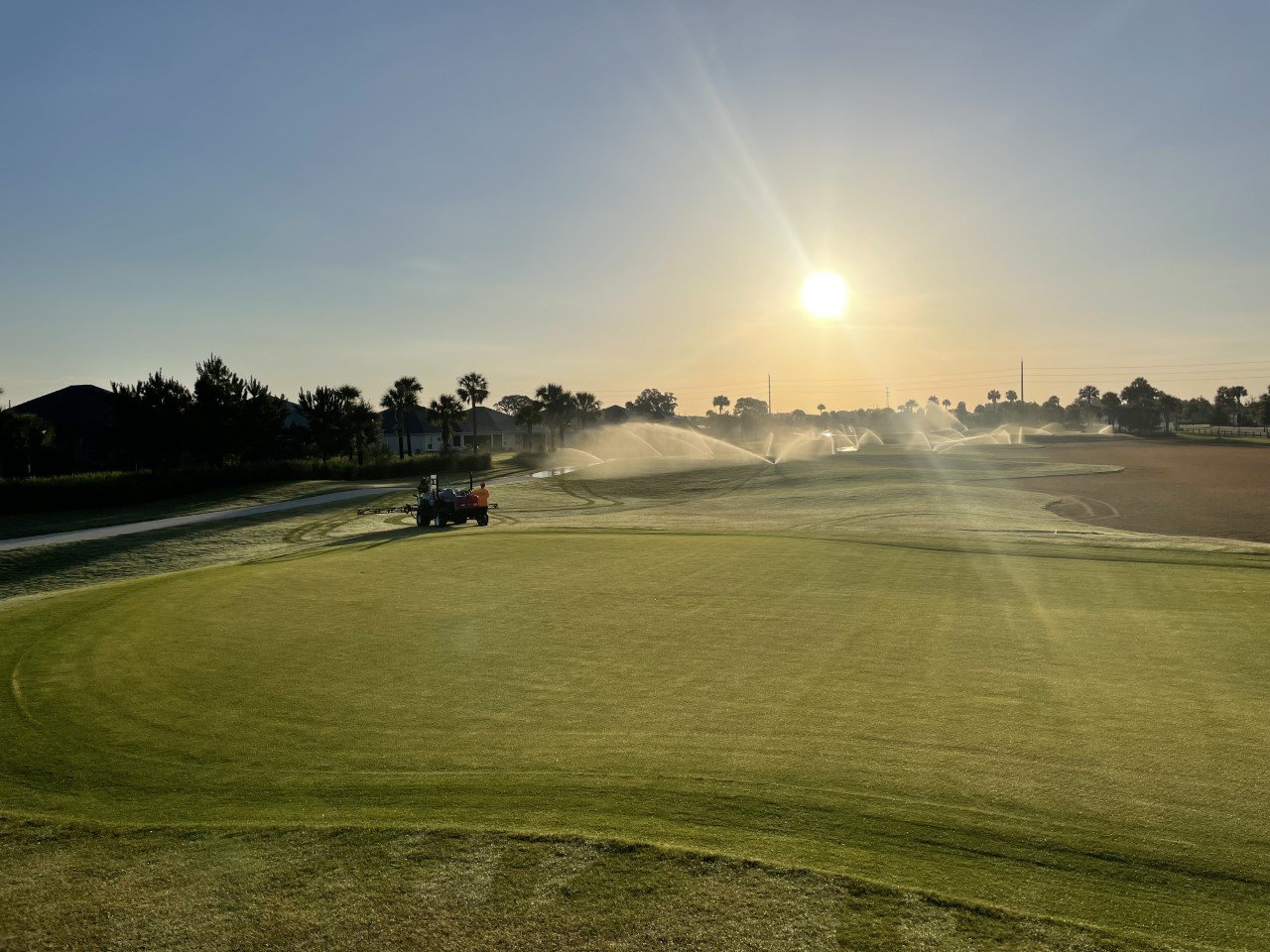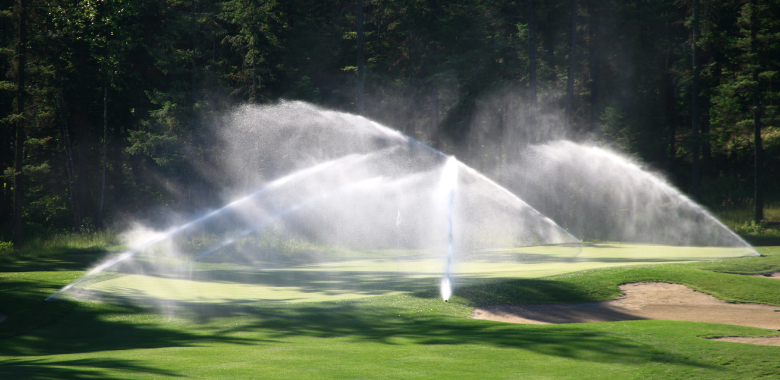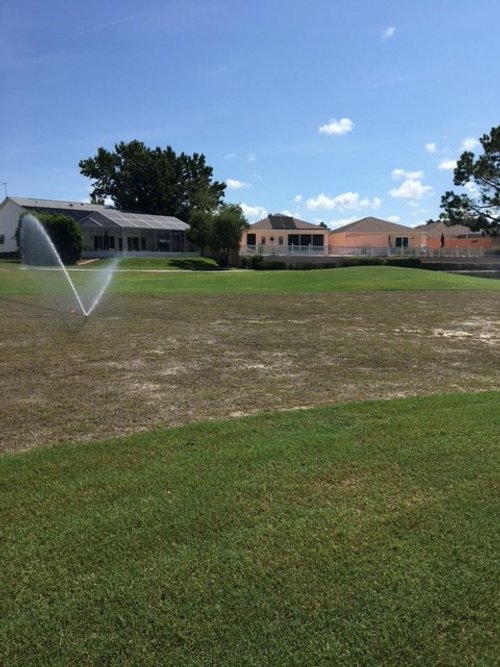Irrigation audits are evaluations conducted on the irrigation system of different areas of a golf course — greens, tees, and fairways to determine the distribution uniformity (how uniformly the site is being irrigated) and the precipitation rate (the speed at which the site is being irrigated) of the irrigation system. In other words, an irrigation audit helps evaluate the efficiency and operation of the irrigation system. Irrigation audits provide all the information necessary to reduce water costs for golf courses by providing methods to improve efficiency, minimize runoff, and reduce turfgrass damage. In some cases, they even help understand the need for a new irrigation system.
When are Irrigation Audits Conducted?

According to the USGA, spring is a good time for an irrigation audit as irrigation requirements peak during the summer months for golf courses. Evaluating the irrigation system before the hot weather will allow time for any modifications or improvements that might be needed. It is important to get a professional audit done prior to summer so that the golf course superintendents can start practicing methods to improve irrigation efficiency before the evaporation and transpiration rates start increasing in June.
What to Expect from an Irrigation Audit?
1.Pre-Audit
Irrigation audits are conducted in normal operating conditions. Therefore, it is essential to ensure that the irrigation system is operating in optimal working conditions. The irrigation system should comply with local codes, and there should not be any inconsistencies in the system due to factors like tree roots, broken or missing sprinkler heads, mismatched or incorrect nozzles, leaking connections, clogged orifices, sunken sprinkler heads, etc. Some golf course managers prefer to perform irrigation audits on the system without checking it beforehand. How one conducts the audit depends on their goals — whether they are trying to prove the efficiency or inadequacy of the current system.
Additionally, site inspections are conducted to provide a description of the operating conditions and the mode of operation of the sprinkler system for a better understanding of the audit report. This description contains the numerical area value of the evaluation site, the type and model of the irrigation system, the nozzle type, how the water is applied, how the controller relays information, when the computer records the information, how flow rates are evaluated, etc.
2. Irrigation Audit Procedure
An initial visit is conducted by the irrigation audit team where the area to be evaluated is selected and to collect initial data like the type of controller, current watering schedule of the green, sprinkler head spacing, sprinkler operating pressure, and dynamic and static pressure. Sprinklers are checked for optimal working conditions and adjustment.
The condition of the turfgrass is also evaluated via a soil test probe that is inserted into the turf to determine the soil moisture content, root depth, the amount of organic matter that has accumulated, and the thatch layer buildup. A field test map is also drawn at this stage. Based on the information collected, the number of catch cans that need to be used is determined, and the placement of these cans is recorded on the field test map.

Catch can tests are conducted during irrigation audits as they provide accurate values for determining distribution uniformity and precipitation rate. For a catch can test, catch cans or catch devices are placed in the pattern that was decided on the first visit. To achieve the best results, these devices should be the same size and should not be placed too close together. The sprinklers in the evaluation zone are then allowed to run for a predetermined amount of time, and then the volume of water collected in the catch devices is recorded in the site inspection sheets. Any information about valve malfunctions, pressure problems, sprinkler problems, arc misalignment, leaks, etc., is also noted at this stage.
Controller and point of connection information that includes the type of controller, the number of stations it controls, the minimum and maximum run times, and the number of programs is collected separately.
3. Post Audit
Distribution Uniformity (DU) and Precipitation Rate (PR) are calculated using mathematical formulas where the water volume values in each catch can and the total number of catch cans are used. Based on these results, a new irrigation schedule is developed, and it considers factors like the efficiency of the sprinkler, the wagering requirement of the plants and the local soil and water properties. The schedule should also take into account the weather and turf type to determine the amount of water, and the irrigation frequency is determined based on the drainage of the soil.
How to Use Water Sustainably on Golf Courses?
The Water Use and Conservation Practices on U.S. Golf Courses published by the GCSAA (Golf Course Superintendents Association of America) that analyzed water use on golf courses stated that 2,312,701 acre-feet of water was being used annually for golf course irrigation at the time. This value was 0.5 percent of the total water withdrawal, which was 457,000,000 acre-feet in the U.S. around that time, according to the U.S Geological Survey.

The report said this showed promise that golf course managers and superintendents would be able to aid golf to become a sustainable business and continue to add value to the community and encouraged the use of conservation practices for this purpose.
Some of the practices suggested by the USGA to minimize water use in golf courses are as follows.
Turfgrasses that naturally thrive in the local climatic and geographic conditions should be selected for establishing golf greens as they have low irrigation requirements.
Recycled water should be used for irrigation as this will reduce the requirement for potable water.
Cultural practices like aeration and soil cultivation should be followed to ensure the soil is not compacted due to the heavy traffic on golf courses and, therefore, has good drainage to prevent irrigation water runoff.
Different golf courses have different irrigation requirements, which means what worked for one course might not work for another. Professionals should be consulted so that they can inspect the land and then design and install an irrigation system that will fit its needs the best, reducing water wastage.
Devices like in-ground sensors and soil moisture meters should be incorporated into the irrigation system to ensure the turf is only watered according to the need of the day after considering the weather conditions. For example, on the days when it rains, intelligent irrigation systems will not water the turf. This means the water will not get wasted, and the roots of the turf will not experience water stress due to excess irrigation.
Another simple way to retain soil moisture is to use mulch under trees and in landscaping beds.
The turf in out-of-play areas can be reduced as it is not necessary there. This will reduce the watering requirement for the area as well.
Finally, educating and training personnel to see the importance of water conservation and the proper techniques to use irrigation water efficiently will go a long way in minimizing water usage on golf courses.
The report by GCSAA also encouraged conducting irrigation audits regularly to improve the efficiency of the irrigation system and the schedule. DTE Golf® has certified golf irrigation auditors whose experience, skill and knowledge allow them to conduct irrigation audits and provide reports that significantly reduce the irrigation costs of golf courses. Contact us today if you are in need of an irrigation audit for your course!
